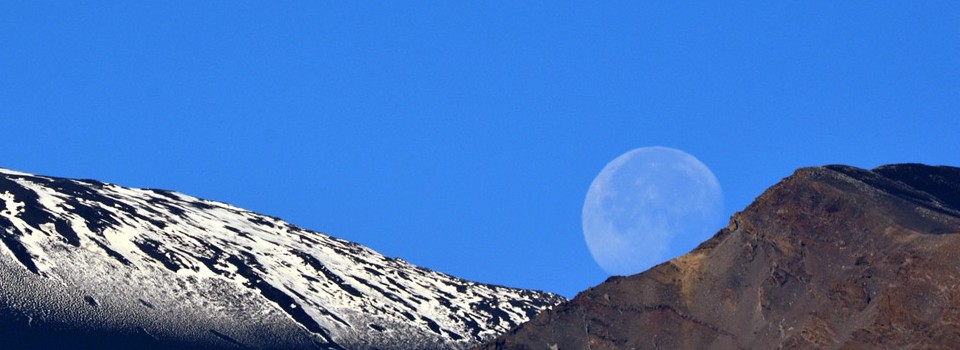
Negli ultimi giorni in area sommitale dell'Etna sono avvenuti due nuovi episodi di attività eruttiva. Il primo, nelle prime ore del 21 maggio 2016, ha avuto luogo alla Voragine, già origine di due episodi parossistici nei giorni 18 e 19 maggio. Questo episodio è stato preceduto, a partire da mezzogiorno del 20 maggio, da una modesta attività stromboliana alla Voragine, che ha prodotto boati udibili in una vasta zona sui versanti sud ed orientale del vulcano. Nella notte l'attività si è gradualemente intensificata, con esplosioni provenienti da due o tre bocche all'interno della Voragine. Contemporaneamente si è registrata una nuova inflazione (rigonfiamento) dell'area sommitale, come era anche successo prima dei parossismi precedenti. Poco dopo le ore 04:00 locali (=UTC+2) ed in concomitanza con un repentino aumento dell'ampiezza del tremore vulcanico, le esplosioni stromboliane sono passate a getti pulsanti di lava con ricaduta di bombe incandescenti fino ad una distanza di 1 km a sud (versante meridionale della Bocca Nuova), e si è formata una nube eruttiva che veniva spinta dal vento verso sud-sudest. Le immagini della telecamera termica a Monte Cagliato (EMCT, sul versante orientale dell'Etna) mostrano che era attiva anche una bocca nella parte meridionale del Cratere di Nord-Est che era sprofondata il 18 o 19 maggio. Le sfavorevoli condizioni meteorologiche hanno fortemente limitato la visibilità, peggiorando ulteriormente verso la conclusione dell'episodio eruttivo. E' stato comunque possibile osservate che durante l'acme del parossismo si è formata una frattura sul fianco sud-orientale del cono centrale, e nella "sella" fra esso e il vecchio cono del Cratere di Sud-Est si è aperta una bocca effusiva che ha alimentato una piccola colata di lava diretta in direzione della Valle del Leone. La foto a sinistra, di Alessandro Lo Piccolo, mostra l'attività esplosiva alla Voragine a destra e la piccola colata più a sinistra, che ha percorso solo poche centinaia di metri. E' avvenuto anche un nuovo trabocco lavico dall'orlo occidentale della Bocca Nuova, completamente riempita dalle lave della vicinissima Voragine, alimentando una colata con numerose digitazioni che si sono sovrapposte a quelle dei trabocchi avvenuti nei giorni 18 e 19 maggio. L'attività ha cominciato a diminuire intorno alle ore 05:00 locali, ed era sostanzialmente finita verso le ore 06:00.
Dal mattino del 22 maggio, la bocca eruttiva formatasi il 25 novembre 2015 sull'alto fianco orientale del cono del Nuovo Cratere di Sud-Est ha prodotto una serie di emissioni di cenere, con pennacchi che in assenza di vento si sono alzate diverse centinaia di metri per disperdersi poi nell'atmosfera. Alcune di queste emissioni hanno creato piccole anomalie nelle immagini della telecamera termica di EMCT, evidenza di materiale caldo. Nella serata del 22 maggio, è stata osservata una ripresa dell'attività stromboliana al Cratere di Nord-Est, che ha subito forti oscillazioni durante la notte. Le esplosioni più forti hanno lanciato bombe incandescenti fino a qualche centinaio di metri sopra l'orlo craterico, con ricaduta sui fianchi del suo cono. Durante la giornata di oggi, 23 maggio, sono avvenute sporadiche emissioni di cenere dalla bocca sul fianco orientale del cono del Nuovo Cratere di Sud-Est.
L'attività dell'Etna viene seguita costantemente attraverso i sistemi di sorveglianza visiva, termica, sismica, infrasonica e delle deformazioni del suolo.
ETNA UPDATE, 23 MAY 2016, 17:30 UTC
During the past few days, two further eruptive episodes have taken place in Etna's summit area. The first, in the early morning hours of 21 May 2016, occurred at the Voragine, which had been the site of two paroxysmal episodes on 18 and 19 May. This latest episode was preceded by modest Strombolian activity, which started around noon on 20 May, producing explosion noises audible in a vast area on Etna's southern and eastern flanks. In the night, the activity gradually intensified, with explosions from two or three vents within the Voragine. Contemporaneously, renewed inflation of the summit area was recorded by a clinometer at Punta Lucia, to the northwest of the summit craters, as had happened also before the preceding paroxysms. Shortly after 04:00 local time (=UTC+2) and accompanied by a rapid increase of the volcanic tremor amplitude, the Strombolian explosions passed into pulsating jets of lava, launching incandescent bombs to a distance of about 1 km (to the southern base of the Bocca Nuova), and an eruption column was blown by the wind toward south-southeast. The images recorded by the thermal monitoring camera at Monte Cagliato (EMCT, on the eastern flank of Etna) show that eruptive activity also occurred form a vent in the southern portion of the Northeast Crater, which had collapsed on 18 or 19 May. Visibillity was rather reduced due to weather clouds and further deteriorated in the final phase of the paroxysm. Yet it was possible to observe, during the climax of the paroxysm, that a fracture formed on the southeastern flank of the central cone, and in the "saddle" between this cone and the old cone of the Southeast Crater an effusive vent became active, which emitted a small lava flow toward the Valle del Leone. The photo above at left, courtesy of Alessandro Lo Piccolo, shows the explosive activity at the Voragine at right, and the little lava flow further left, which had advanced a few hundred meters. Again, lava erupted from the Voragine spread out over the floor of the nearby Bocca Nuova, already completely filled by the earlier lavas from the Voragine, and overflowed its western rim, feeding a multilobate lava flow that covered the lavas from the overflows on 18 and 19 May. The activity started to diminish around 05:00 local time, and was essentially over by 06:00.
Since the morning of 22 May, the eruptive vent formed o 25 November 2015 on the upper east flank of the New Southeast Crater cone was the source of a series of ash emissions, with plumes which in the absence of wind rose several hundred meters above the summit and then dispersed in the atmosphere. Some of these emissions produced small anomalies in the images of the thermal camera EMCT, pointing to the presence of hot material. On the evening of 22 May, Strombolian activity resumed at the Northeast Crater, which continued at flucutating rate and intensity through the night. The strongest explosions ejected incandescent bombs up to a few hundred meters above the crater rim, some of which fell onto the flanks of its cones. Today, 23 May, sporadic ash emissions continued from the vent on the upper east flank of the New Southeast Crater cone.
The activity of Etna is monitored continuously by the systems of video and thermal cameras, seismic stations and ground deformation.









 Dalla serata del 17 maggio 2016 è stata in corso un'intensa attività stromboliana al Cratere di Nord-Est (NEC) dell'Etna,
Dalla serata del 17 maggio 2016 è stata in corso un'intensa attività stromboliana al Cratere di Nord-Est (NEC) dell'Etna, 
